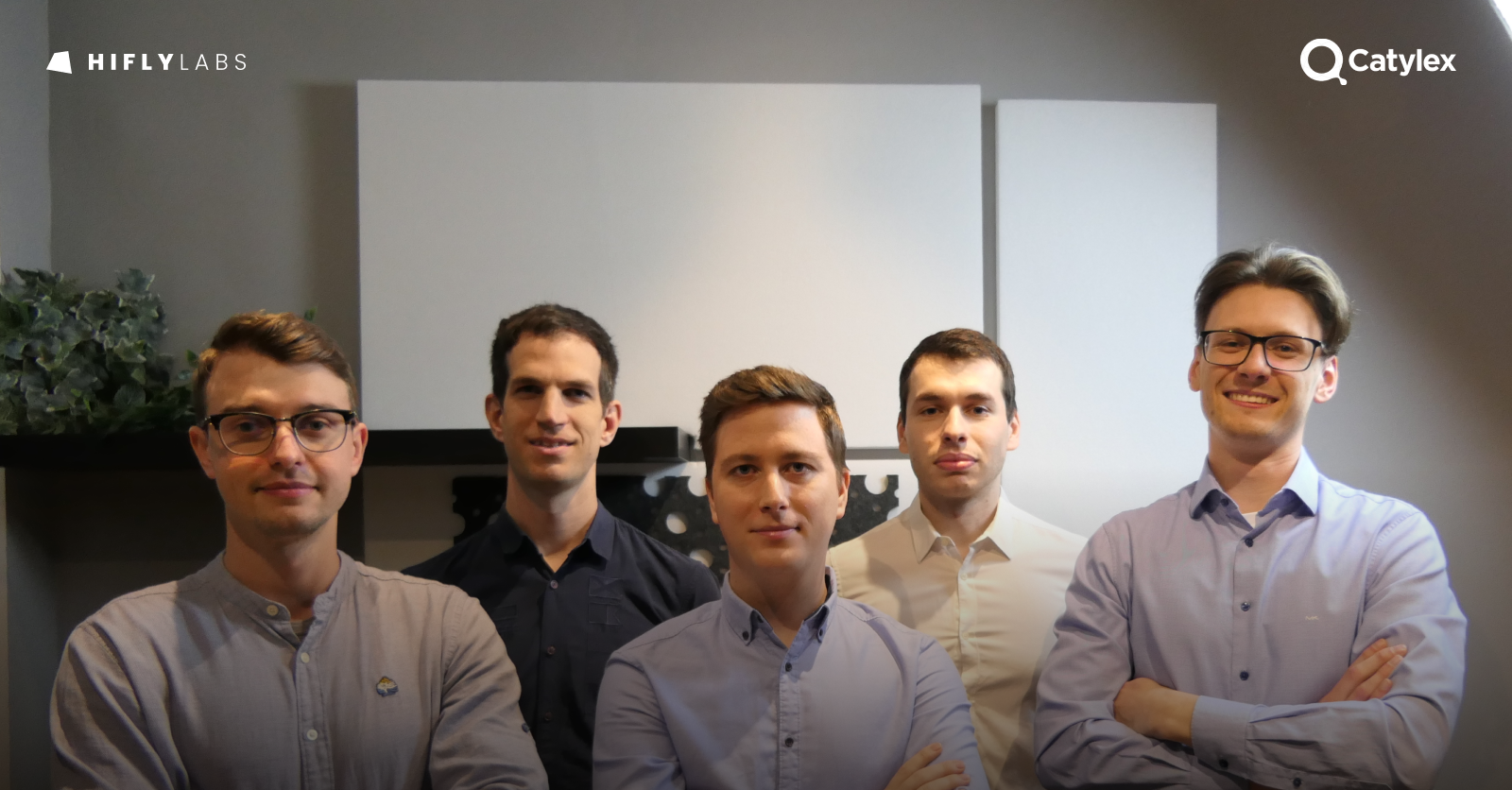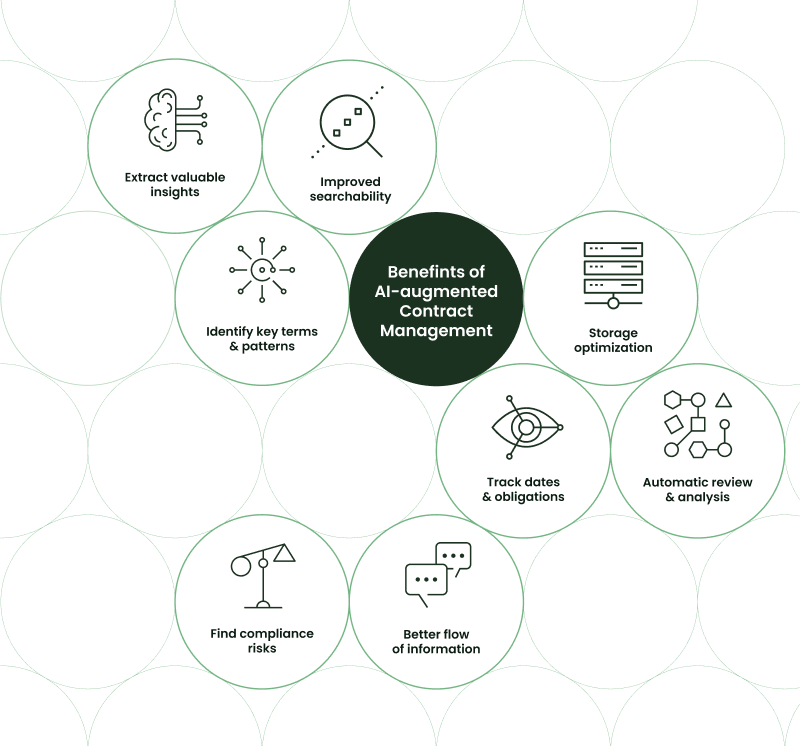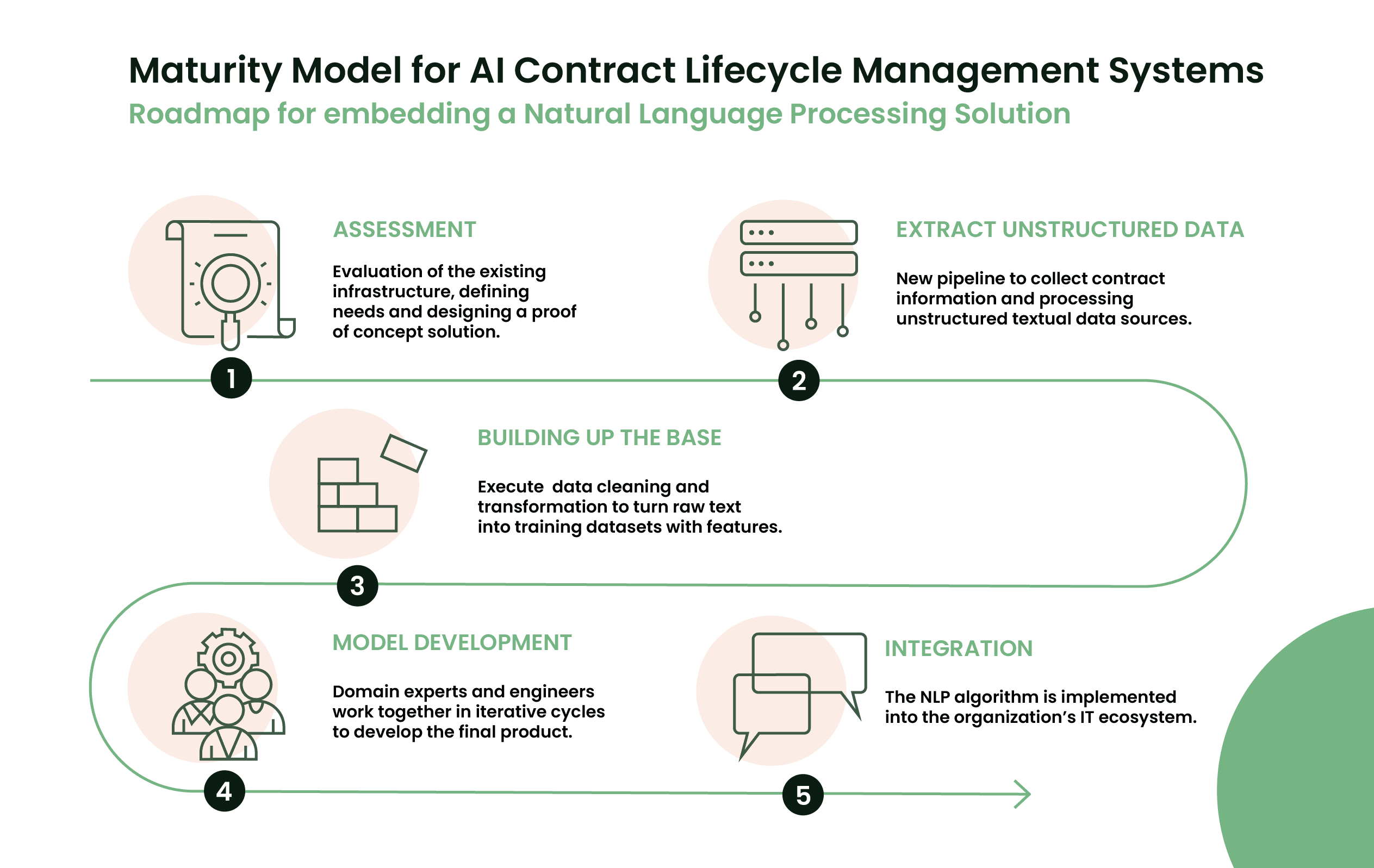
Operationalizing AI Ontologies
An operational intelligence layer, the ontology, models relationships of entities and actions, enabling “digital twins” for organizations.

AI-augmented contract analytics and document management, enterprises can now reduce review times by 50%, resulting in cost savings up to 70%.
The legal industry has always heavily relied on manual labor, with lawyers charging hundreds of dollars an hour. However, with the dawn of AI-augmented contract analytics, enterprises can now reduce review times by 50%, resulting in cost savings up to 70%.
The importance of contract management cannot be overstated. It ensures that organizations fulfill their legal obligations. And as a result, the role of legal professionals has grown to an unprecedented extent over the years.
Billing rates for lawyers at large law firms are typically around $500-$900 per hour in the US, just so that they manually review contracts. Fortune 1000 companies have an average of 20-40,000 active contracts at any given time. This means reviews, negotiations and approvals for hundreds, probably thousands of individual documents on a daily basis. Without the proper contract management solutions in place, enterprises of this scale face countless risks, like financial penalties. Let's see how AI-augmentation fixes all this.
Lately, we’ve been using AI assistance for almost everything: be it writing, sentiment analysis, research, cloud migration, coding, or just bouncing ideas off the wall.
Natural Language Processing (NLP) is what made it all possible. This branch of Artificial Intelligence deals in computers understanding, interpreting, and manipulating human language. By combining linguistics and data science, AI is now capable of reading, hearing speech, and interpreting context. The NLP market is currently experiencing explosive growth, with a value of USD 10.72 billion in 2020 and an anticipated worth of USD 48.46 billion by 2026.
Large language models, despite being what has played the most significant role in this growth, come with some critical limitations. Entering sensitive information into third party systems could very well compromise confidentiality down the line. The most popular kids on the generative AI playground automatically send all processed text into their providers' data pool. Even if you opt out from your data being used for training, it will be sent to the provider's servers and stored there temporarily. It is up to your business privacy policy and your legal liabilities (such as trade secrets) if you're comfortable with this being the case. The alternative is acquiring a language model that runs locally on your own systems, even offline, and manage delicate documents in total confidentiality.
Furthermore, integrating a generalized AI solution into a highly specialized business software is not ideal. Irrelevant information and fictitious answers (the so-called “hallucinations” of genAI) are currently not up to the standards of organizational management tools. Where accuracy, reliability, and security are a must, you should definitely consider customized LLMs.
The management of legal documents is one of the use cases where the need for heightened security and accuracy will be relevant.
And while it's true that language models can reduce contract review times by 50%, cut legal costs by up to 70%, the answer is still no: lawyers will not be replaced by algorithms just yet. But how about needing to hire half as many compliance lawyers than before? That sounds about right. Traditional workflows are becoming both redundant and overly expensive compared to those that utilize AI.

Contract Lifecycle Management Systems (CLMS) were already essential tools for anyone in need of keeping track of thousands of documents. The integration of custom LLMs into these systems offer various benefits that can significantly improve their overall efficiency. These advantages work in harmony with one another, building upon each other's capabilities:
For starters, NLP integration offers improved searchability and optimized document storage. This is especially useful for large and complex contracts; ones which include appendices, tables, schedules and annexes besides text.
Another way AI will help get contracts done right is automatic analysis and review. The model identifies key terms and clauses, patterns and trends in contract language, as well as highlighting areas of improvement. This will make a huge difference in both daily processes and authoring. You can free up a lot of time and human effort, and only focus on problematic parts of a document.
And this is where the AI’s benefits really shine through. Compliance can be made trivial, as organizations can neutralize potential risks well before they become real problems. Crucial information such as dates, parties, and obligations can be easily tracked. This reduces the probability of legal disputes, renewal leakages, missed deadlines, or any non-compliance with legal or policy requirements.
Furthermore, AI-powered management systems can streamline communication. By notifying stakeholders when certain conditions are met, you'll automatically improve collaboration and information flow across different departments and teams.
Every organization has unique operational intricacies and requirements. While we can't offer a concrete plan that fits everyone, a general roadmap can still be drawn for embedding generative AI solutions.

The first step is the assessment of your IT infrastructure and business needs. Data scientists then extract unstructured text en masse to build up a training dataset. After cycles of tests and iterations they can achieve close to 100% recall, accuracy, and precision. At this point, the NLP model is ready to be fully embedded into your IT ecosystem.
To keep up with this new world of AI, it's crucial to be an early adopter of relevant technologies. New methods are expected to become mainstream within mere months. And with the rapid pace of change, we either embrace innovations or get left behind in the competition. As we face yet another industrial revolution, it's vital for businesses to plan for continuous adaptation. Long story short, you have to be able to smoothly integrate the latest tools into your operations continuously.
Staying ahead of the curve will bring the greatest challenge in the market for everyone in the near future. AI is not taking your jobs — but those who know how to utilize it certainly will.
In our next article, we will further explore the scope of large language models' business use cases, and more importantly their limitations. We will also examine how specialized NLP solutions can round the edges of general-use AI, and offer enterprises new opportunities. Check back later, and stay tuned for our next issue about the latest advancements in AI!